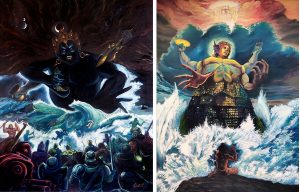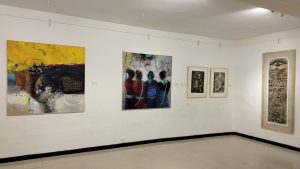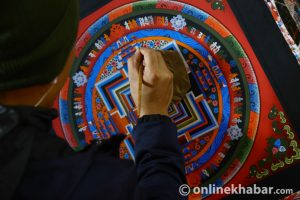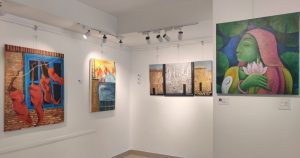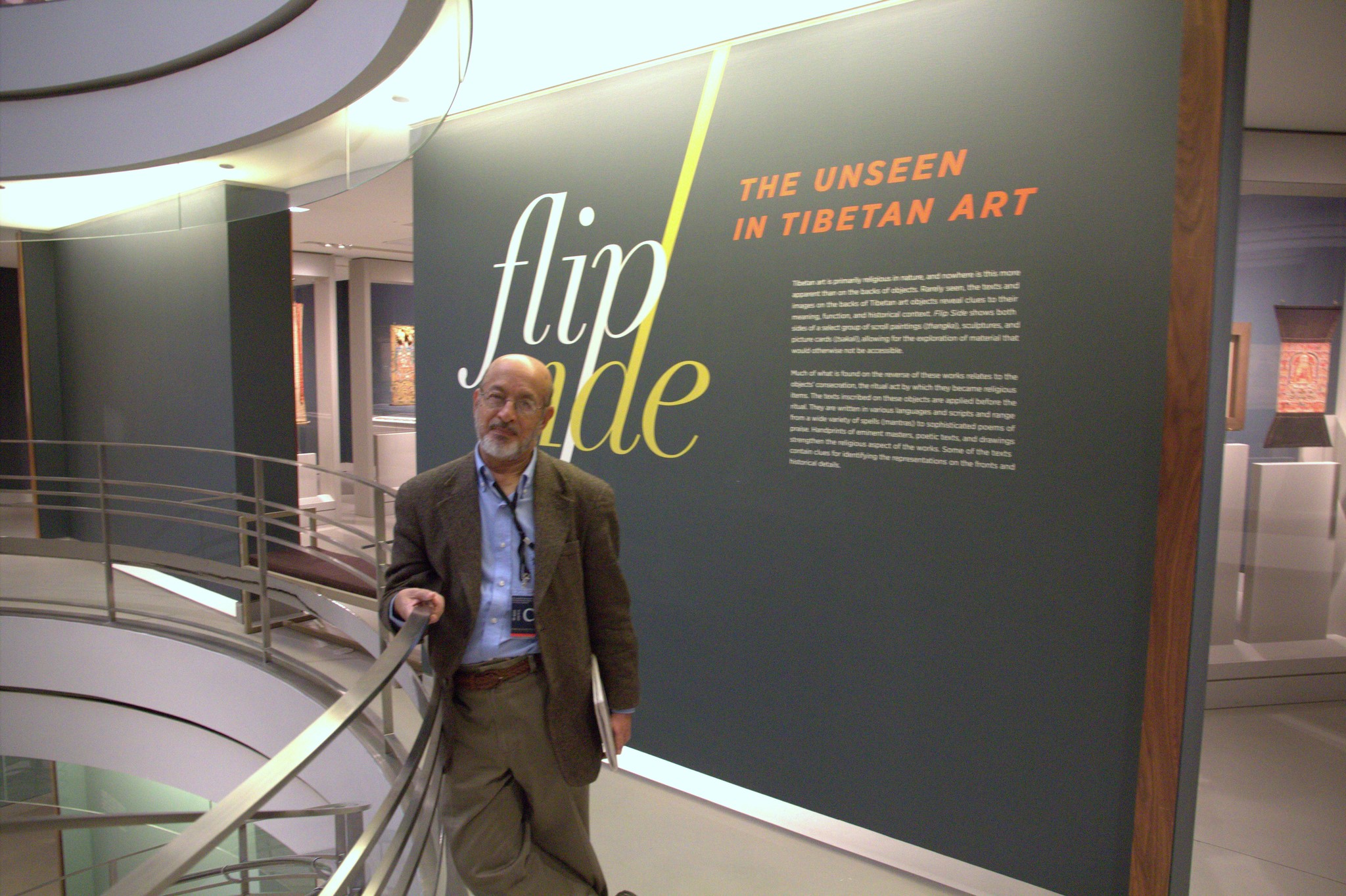
Gautama Vajra Vajracharya is an eminent Sanskritist and a renowned scholar of the art and culture of the Indian sub-continent. He retired a couple of years ago after teaching History of South Asian Art at the University of Wisconsin for twenty-three years. He has authored numerous books and published over fifty articles on the history and culture of Nepal. However, it is a unique approach to the region’s history, art and culture that has set him apart from other scholars. Zeroing in on the phenomenon of the monsoon and using his mastery of Sanskrit to decipher ancient texts, Vajracharya has brought to light some ground-breaking pieces of evidence. The eminent art historian Pratapaditya Pal has said of Vajracharya’s book Frog Hymns and Rain Babies: “[it is an unprecedented attempt to give] serious consideration to the impact or influence of [the monsoon] on the Indian mind…in the light of Sanskrit and ancient Indic art.”
Vajracharya talked to Kapil Bisht about being schooled in Sanskrit, clues embedded in the Frog Hymn, the importance of the monsoon in the art history of the Indian Sub-continent and links between Newar culture and the culture or pre-Vedic India.
Tell us about your beginnings as a scholar.
I was born into a Newar family in Kathmandu in 1940. In the 1950s, the Western schooling system was becoming popular in Kathmandu. My father abhorred that system. He was against written examinations. He decided to school us in the traditional way. There wasn’t a school like that then, so he set one up in the attic of our house. It was called Samshodhana Mandala.
Our teacher was Nayaraj Pant, a Sanskritist. He made us memorize entire books. Fortunately, he had tremendous foresight. He knew speaking and writing Sanskrit alone would amount to nothing. To give us a chance in life he taught us to study ancient inscriptions and iconography.
Our school used to publish a journal called Poornima. The late Mary Slusser, the author of Nepal Mandala, was one of the subscribers. Whenever I went to deliver her copy, she used to chat with me for hours about Nepali history and culture. Later, when she returned to the States, she referred me to her scholar friends, many of whom came to do research in Nepal. In 1974, the famous art historian Dr. Pratapaditya Pal, who at the time was Senior Curator of Indian and Southeast Asian Art at The Los Angeles County Museum of Art, came to Kathmandu. I assisted him in his research. Before leaving he asked me casually if I would want to come to the States. My response was: “When?” I thought he was joking. He wasn’t; six months later, I got a letter of appointment to The Los Angeles County Museum of Art. I went and thus began my life as a scholar in the West.
A text that you have deeply studied over the course of your career is the Rigveda. When was it written?
The Vedic texts including Rigveda were memorised generation after generation for many centuries. Eventually, they were written down only in the late classical period. However, dating Vedic texts is complex for a different reason. All these texts are composed within an extended period of time rather than at a particular point in time. Very likely, the bulk of the earliest Vedic text, the Rigveda, was composed around 1500 BC. After this came Atharvaveda, some parts of which seem to have been composed around 1200 BC, and Satapatha Brahmana, written around 800 BC. The later Vedic texts have much more information on monsoon culture as the Vedic people became more and more familiar with the geographical and seasonal phenomena of the Sub-continent.
The Rigveda is believed to be written by Indo-Iranians who arrived in India by crossing the Hindu Kush. Do scholars of Indian Sub-continental history agree on this fact?
Previous scholars were involved in finding the linguistic similarity between Zen Avesta and Rigveda, and have convincingly demonstrated that these two texts are composed by the same group of people who spoke an earlier version of Sanskrit and migrated from Afghanistan to India. Although scholars knew that the Avesta was composed in their original homeland and the Rigveda after they settled down around Punjab, they never tried to determine if there was a significant difference between the texts. In a sense, I was the first person to look for differences in those texts. Lack of any reference to monsoonal phenomena in the Avesta and the growing popularity of monsoon culture in Vedic literature helped me to pinpoint the significant difference between these two works and to present my view that the aspects of the monsoon culture we find in Vedic literature has to be pre-Vedic.
Are there texts written in the Sub-continent that precede the Rigveda?
If there are any documents written before the time of the Rigveda they are the short inscriptions carved on the tiny steatite seals of the Indus Valley civilisation. But those inscriptions have not been deciphered yet and the subject matter of the inscriptions has remained unknown.
You are of the belief that the migrants from Afghanistan learned the monsoonal rituals and the praise of frogs from the natives of the Indian sub-continent. Who were these natives? What do we know about their culture and religion?
Despite the fact that we don’t have any text written or composed by the pre-Vedic natives of South Asia, the monsoon culture described in Vedic literature shows that the daily life of the natives was closely associated with monsoon-based agriculture. Hence, we can safely call them the people of the monsoon culture. The Newars of the Kathmandu Valley certainly belong to this culture.
You have spent a lifetime studying the Frog Hymn contained in the Rigveda. Why is it important or special?
The Frog Hymns are found in two different texts, the Rigveda and the Atharvaveda. In most parts of South Asia, frogs aestivate for many months, then emerge from the ground and start croaking with the arrival of the monsoon rains. This phenomenon is described clearly in the Frog Hymns. Significantly, however, in other parts of the world, including Afghanistan, the original home of the Vedic Aryans, frogs hibernate and become active only after snowmelt. Thus, the Frog Hymns contain solid evidence to prove that Vedic literature does contain aspects of monsoon culture of South Asia.
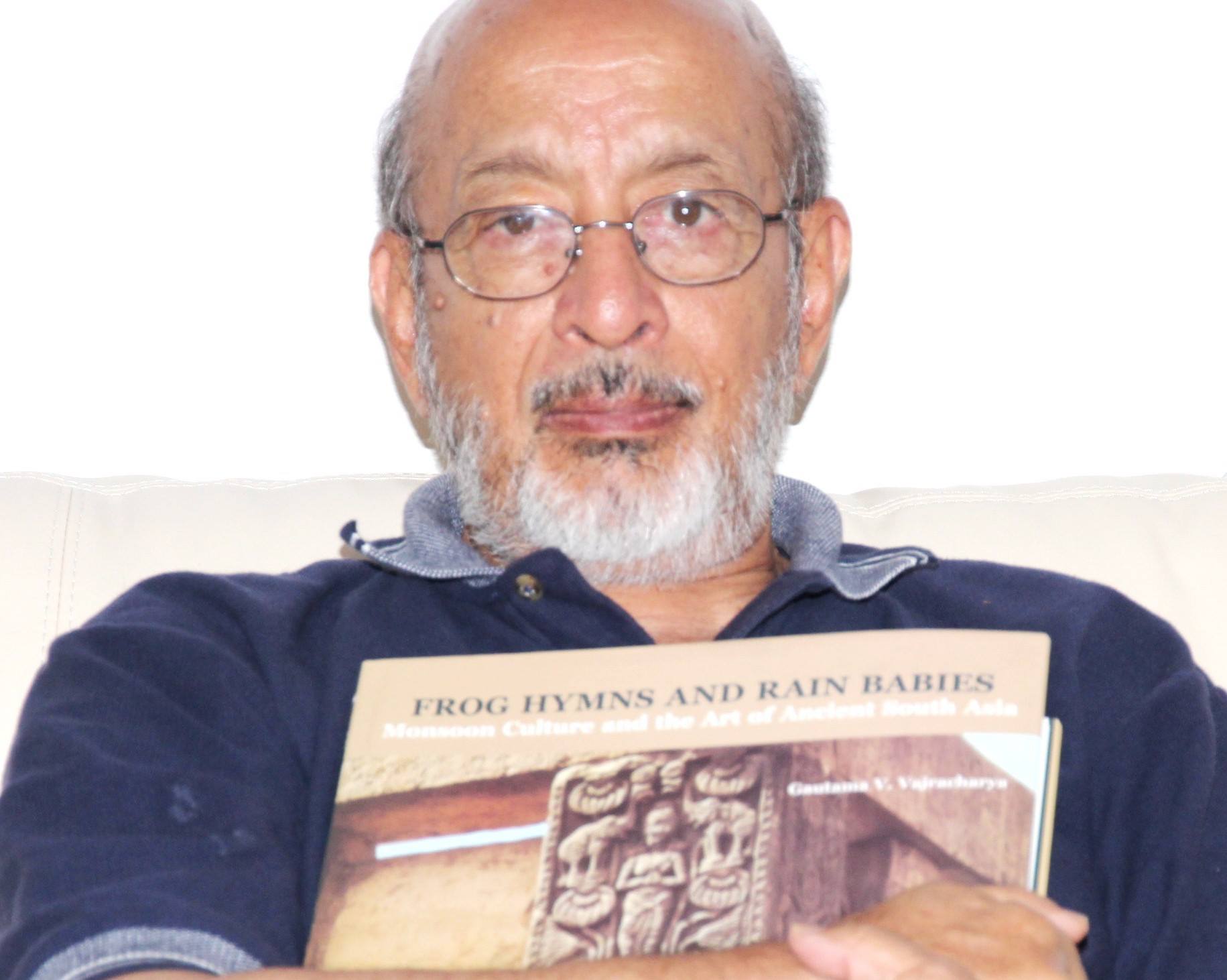
You wrote in a paper once that the Frog Hymn “provides us with a clue to developing a new methodology for the analytical study of Rigvedic culture in the light of ecclesiastical meteorology.” Can you briefly explain some of the most important clues to Rigvedic culture contained in the Frog Hymn?
Earlier art historians realised that the Vedic literature is useful for understanding the conceptual significance of South Asian art. But there is a huge time difference between them. So the question is: What is the link between Vedic literature and art? I have demonstrated that monsoon culture is the link. For instance, according to Vedic literature, cloud mothers conceive for ten lunar months and give birth to a rain-child. It was believed that the appearance of the mythical creatures such as makaras and turtles in the formation of rain cloud indicates the gestation of the rain clouds. This belief is expressed in South Asian art by depicting the creatures not only on ceilings but also around temple entrances, symbolising the cloud-gates of heaven.
The bulk of your fieldwork, certainly the one for your book Frog Hymns and Rain Babies, was done in the Kathmandu Valley, and you ceaselessly emphasize the importance of the Valley. What makes it so important in the study and understanding of Sub-continental art history?
In recent years I have dug deep into Newar culture. It is ancient. I have posited it is pre-Vedic. It’s an unprecedented claim. The Vedic texts were written around 1500 BC, while the earliest traces of Newar culture go back only as far as the fifth century AD. The obvious question is: How can there be a link between these two cultures across such a huge time gap? Like I have said before, the Rigveda doesn’t only contain references to Indo-Iranian people and lifestyles but has a considerable chunk of the local people and inhabitants of the Himalayan region. However, scholars have always overlooked this aspect; they only studied the Rigveda to find things that showed a connection with the Greek civilisation. There have even been some who claim that the Rigveda was written outside the Sub-continent.
When I read the Frog Hymn I realised that it was definitely written in India and that the writings recorded the culture that was prevalent in India before the arrival of the Indo-Iranians. How do I know this? The monsoon is a phenomenon of the Sub-continent. The Indo-Iranians couldn’t have written a book about the monsoon in their country because there is no such thing as monsoon there.
A quarter of the Rigveda is about the monsoon. That chunk of Rigveda matches almost exactly the foundations of Newar culture, meaning the rituals of the Newars date back to before the arrival of the authors of the Rigveda. This doesn’t mean that the Vedic people learned their culture from the Newars. It only means that although that ancient culture waned in India some of its features continued to survive in Newar culture. Worship of frogs, artistic rendition of the belief that creatures descend from heaven together with the monsoon showers and the custom of Maharjan farmers having intensive educational sessions during the rainy season are all aspects of that pre-Vedic culture.
You studied Indian art history, lived and taught in the U.S., which could be seen as steering away from Nepali art history, even though you did continually return to research and corroborated so much of your theses on evidence drawn from ancient Nepali art. Did you ever feel like you overlooked Nepal?
We think that being a Nepali we must study all things Nepali. Our ideas are parochial. We can’t do a comparative study. One of the first things I learned after going to the U.S. was that there are two cultures: aestivation and hibernation. I have been a scholar of the art and iconography of the Indian Sub-continent for over three decades. One of the biggest lessons I learned in this period is that comparative study is the best way to learn more about one’s culture.

The reason I chose to study Indian culture was that Nepali culture is not that dissimilar from India’s. We are both nations with a monsoon culture. Monsoon has no political boundaries. If rains fail, India and Nepal both suffer.
I think the monsoon culture needs to be studied deeply. Only then can we understand the culture of the Sub-continent. To squabble over whether Buddha was born in Nepal or if a particular god is Indian or Nepali, Hindu or Buddhist, only takes us away from the central question.
It is believed that Vishnu sleeps for four months during the monsoon [June-September]. We worship him as Jalasayan Narayan.
Then we celebrate his waking up again in Kartik [October]. This is not an act of worshipping an Indian god or a Nepali god. It’s worshipping a rain god.
Why do you think monsoon is so important to understanding the history of the Sub-continent?
Ours is an aestivation culture. Everything begins with the arrival of the rains. Monsoon is in our psyche. Who is God? God is someone who can bring rain. If he can’t, he is not God.
Art in the Sub-continent is closely related to rain. Drought and famine are never shown in art in India and Nepal. Skinny figures, disease-stricken people and famine are not shown anywhere in India or Nepal, even though it is said that the Buddha ate only a grain of rice every day for months when he was meditating. The first instance of showing the Buddha with an emaciated body is found in Gandhar art, which was done was Greco-Roman artists, strangers to the monsoon culture of the Sub-continent. But even after that mainstream Indian and Nepali art continued its policy of not depicting an emaciated Buddha.
We need to remember that in our part of the world we believe strongly in the philosophy of darshan: what we see affects what will happen. A skinny figure is inauspicious. The Viṣṇudharmottara Purāṇa (38. 24-25) states that “an auspicious painting… promotes long life, leads to glory or distinction, brings prosperity and increases the harvest.” Similarly, another text, Pratimālakṣaṇa: “If the image is made with a sunken belly, then there will always be a destruction of crops.”
We in India and Nepal believe that a work of art is nimitta, or cause. So an inauspicious art will ruin harvests. Showing well-fed people or animals emerging from a water source, like on the ancient stone conduits in Kathmandu, is an ode to the monsoon rains. Everything related to rain is auspicious. Famine is a nightmare. Representation of monsoon is a beautiful dream.
The depiction of people having sex on temples is also an example of this belief in agrarian prosperity resulting from a successful monsoon. Ancient texts explicitly mention people losing interest in sex as one of the first results of drought and famine. Hungry and emaciated people hardly want to engage in sex.
What about the belief that depicting sex on temples was a form of sex education?
If that was the case, why would the ancient artists show a man having sex with multiple women at a time? That is definitely not something that seems like sex education to me.
Why would the artists depict sex between multiple partners then?
Art is like language. There is grammar in language, but not everyone follows it. With time, more and more exceptions to grammatical rules are added. That is the same with art. It starts with a rule, which is original. But then exceptions crop up and are assimilated into the rulebook. Besides, a single rule can never be applied everywhere. People get bored, they seek to change.
There is also the re-interpretation of the old by scholars and experts. There are two types of symbolism. In the first one, there is an idea, and art is the imitation or representation of that idea. The second type comes from analysing the art and then presenting it again in light of the analysis. Basically what this means is that there is art that is made following an idea and there is idea arrived at by following art. So, only when we understand the original idea can we accurately trace the development of art in a place. Art history is like finding the etymology of a word. If you look up the etymology of a word in the dictionary, you see that how a word has changed meanings over time. That is how it is with art history. I think that is why art history is interesting.
As an art historian, it must be especially painful for you to see the destruction wrought by the earthquake in 2015.
My heart aches. I can’t look at the destroyed buildings. I can’t help thinking whether we will be able to recreate those buildings. I don’t think it will ever be the same again. The Kathmandu Valley of yore is gone, finished. That is how I feel when I’m saddened by the sight of the collapsed monuments, our heritage, our wealth.
What message do you have for scholars of Nepali history and art in the light of the devastation wrought by the 2015 earthquake?
The same thing that I remind myself: There is still enough to be positive about. Many places survived the quake. The oldest wooden torana (tympanum) in Yetkha Bahal is still there. Uku Bahal has also survived unscathed. These are miraculous survivals!
I also keep telling people working to preserve the Newar culture that they need to keep festivals and rituals – intangible heritages – alive. If they disappear, we lose our culture.






